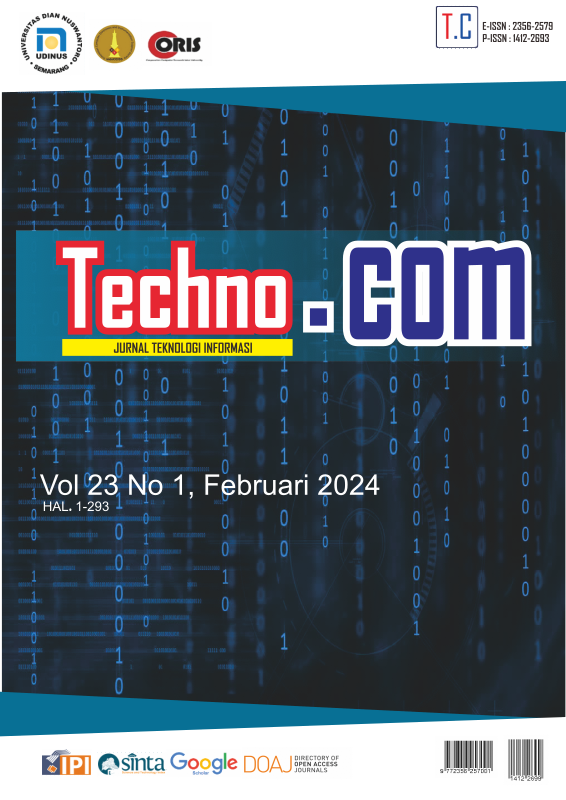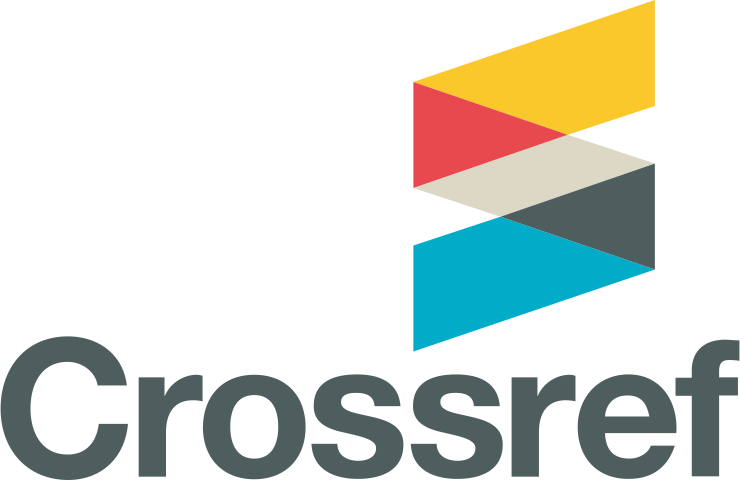Integrate Yolov8 Algorithm For Rupiah Denomination Detection In All-In-One Smart Cane For Visually Impaired
DOI:
https://doi.org/10.62411/tc.v23i1.9734Keywords:
detection, algorithm, smart-white-cane, visually impaired, machine learningAbstract
The eyes are crucial tools for human observation and perception, facilitating various tasks in daily life. Individuals, including those with visual impairments or blindness, engage in currency transactions, posing challenges in recognizing notes and preventing mishaps with counterfeit money. Despite government efforts, features like embossing on banknotes have limited effectiveness due to the circulated currency's disheveled condition. Addressing the visually impaired community's needs is imperative. An innovative solution, the "all-in-one smart white cane," integrated with machine learning supports daily activities, enhancing independence for visually impaired individuals. The YOLOv8 algorithm is employed for the precise detection of monetary denominations, subsequently recorded through a camera and seamlessly integrated into a smart cane, resulting in a consolidated device. This device, designed with standout features, excels in detecting Indonesian Rupiah banknote denominations. Detection performance testing, incorporating methods like object rotation, utilized a dataset divided into training (70%), validation (20%), and test (10%) segments. Modifications to contrast and variability rotation are essential in the context of real-time nomination recognition. These adjustments are implemented to ensure accurate and swift identification in dynamic, real-world scenarios. Testing results reveal a 99% average accuracy in recognizing currency note denominations, presenting an effective solution for the visually impaired community.References
W. Artini, W. Artini, T. D. Gondhowiarjo, T. Rahayu, and Y. D. Lestari, “Impacts of Impaired Vision and Eye Diseases on Vision-Related Quality of Life in Indonesia,” Makara Journal of Health Research, vol. 21, no. 3, Dec. 2017, doi: 10.7454/msk.v21i3.7612.
J. Wang, S. Wang, and Y. Zhang, “Artificial intelligence for visually impaired,” Displays, vol. 77, p. 102391, Apr. 2023, doi: 10.1016/j.displa.2023.102391.
A. Hermawan, L. Lianata, Junaedi, and A. R. K. Maranto, “Implementasi Machine Learning Sebagai Pengenal Nominal Uang Rupiah dengan Metode YOLOv3,” SATIN - Sains dan Teknologi Informasi, vol. 8, no. 1, pp. 12–22, Jun. 2022, doi: 10.33372/stn.v8i1.816.
K. M. Azhar, I. Santoso, and Y. A. A. Soetrisno, “Implementasi Deep Learning Menggunakan Metode Convolutional Neural Network Dan Algoritma Yolo Dalam Sistem Pendeteksi Uang Kertas Rupiah Bagi Penyandang Low Vision,” Transient: Jurnal Ilmiah Teknik Elektro, vol. 10, no. 3, pp. 502–509, Sep. 2021, doi: 10.14710/transient.v10i3.502-509.
F. Andika and J. Kustija, “Nominal of Money and Colour Detector for the Blind People,” IOP Conference Series: Materials Science and Engineering, vol. 384, p. 012023, Jul. 2018, doi: 10.1088/1757-899x/384/1/012023.
A. D. K. Zulfiansyah, H. Kusuma, and M. Attamimi, “Rancang Bangun Sistem Pendeteksi Keaslian Uang Kertas Rupiah Menggunakan Sinar UV dengan Metode Machine Learning,” Jurnal Teknik ITS, vol. 12, no. 2, Sep. 2023, doi: 10.12962/j23373539.v12i2.118320.
A. A. J. V. Priyangka and I. M. S. Kumara, “Classification Of Rice Plant Diseases Using the Convolutional Neural Network Method,” Lontar Komputer : Jurnal Ilmiah Teknologi Informasi, vol. 12, no. 2, p. 123, Aug. 2021, doi: 10.24843/lkjiti.2021.v12.i02.p06.
A. Darmawan, I. G. N. G. A. Widyadhana, and E. H. Binugroho, “Implementasi Metode Deep Learning Pada Prototipe Validator Uang Rupiah,” Sebatik, vol. 26, no. 2, pp. 535–542, Dec. 2022, doi: 10.46984/sebatik.v26i2.2101.
A. K. E. Lapian, S. R. U. A. Sompie, and Pinrolinvic D. K. Manembu, “You Only Look Once (YOLO) Implementation For Signature Pattern Classification,” Jurnal Teknik Informatika , vol. 16, no. 3, pp. 337–346, Jul. 2021.
S. Kudalkar, P. Patil, and N. Shirdhone, “Fake Currency Detection Using Image Processing,” AIJR Publisher, Jun. 2022. Accessed: Nov. 26, 2023. [Online]. Available: http://dx.doi.org/10.21467/preprints.388
A. Bhatia, V. Kedia, A. Shroff, M. Kumar, B. K. Shah, and Aryan, “Fake Currency Detection with Machine Learning Algorithm and Image Processing,” in 2021 5th International Conference on Intelligent Computing and Control Systems (ICICCS), May 2021. Accessed: Nov. 26, 2023. [Online]. Available: http://dx.doi.org/10.1109/iciccs51141.2021.9432274
A. Antre, O. Kalbhor, P. Jagdale, and G. Dhanne, “Fake Currency Detection Using Convolution Neural Network,” International Research Journal of Modernization in Engineering Technology and Science, vol. 5, no. 4, Apr. 2023, doi: 10.56726/irjmets35901.
G. Khoharja, Liliana, and A. N. Purbowo, “Aplikasi Deteksi Nilai Uang pada Mata Uang Indonesia dengan Metode Feature Matching,” Jurnal Infra, vol. 5, no. 1, pp. 51–55, 2017.
Y. Su, B. Cheng, and Y. Cai, “Detection and Recognition of Traditional Chinese Medicine Slice Based on YOLOv8,” in 2023 IEEE 6th International Conference on Electronic Information and Communication Technology (ICEICT), Jul. 2023. Accessed: Nov. 26, 2023. [Online]. Available: http://dx.doi.org/10.1109/iceict57916.2023.10245026
G. Wang, Y. Chen, P. An, H. Hong, J. Hu, and T. Huang, “UAV-YOLOv8: A Small-Object-Detection Model Based on Improved YOLOv8 for UAV Aerial Photography Scenarios,” Sensors, vol. 23, no. 16, p. 7190, Aug. 2023, doi: 10.3390/s23167190.
Downloads
Published
Issue
Section
License
License Terms
All articles published in Techno.COM Journal are licensed under the Creative Commons Attribution-NonCommercial 4.0 International (CC BY-NC 4.0). This means:
1. Attribution
Readers and users are free to:
-
Share – Copy and redistribute the material in any medium or format.
-
Adapt – Remix, transform, and build upon the material.
As long as proper credit is given to the original work by citing the author(s) and the journal.
2. Non-Commercial Use
-
The material cannot be used for commercial purposes.
-
Commercial use includes selling the content, using it in commercial advertising, or integrating it into products/services for profit.
3. Rights of Authors
-
Authors retain copyright and grant Techno.COM Journal the right to publish the article.
-
Authors can distribute their work (e.g., in institutional repositories or personal websites) with proper acknowledgment of the journal.
4. No Additional Restrictions
-
The journal cannot apply legal terms or technological measures that restrict others from using the material in ways allowed by the license.
5. Disclaimer
-
The journal is not responsible for how the published content is used by third parties.
-
The opinions expressed in the articles are solely those of the authors.
For more details, visit the Creative Commons License Page:
? https://creativecommons.org/licenses/by-nc/4.0/
















